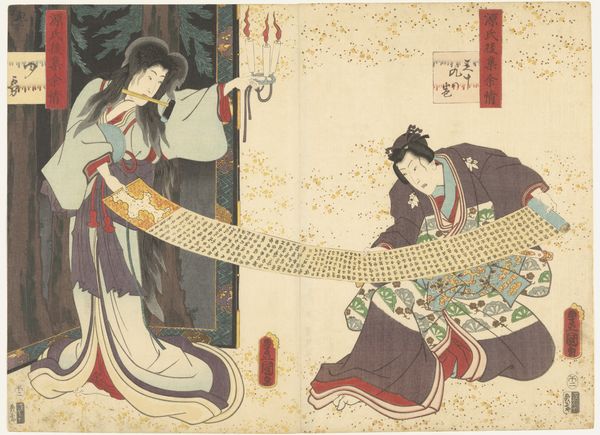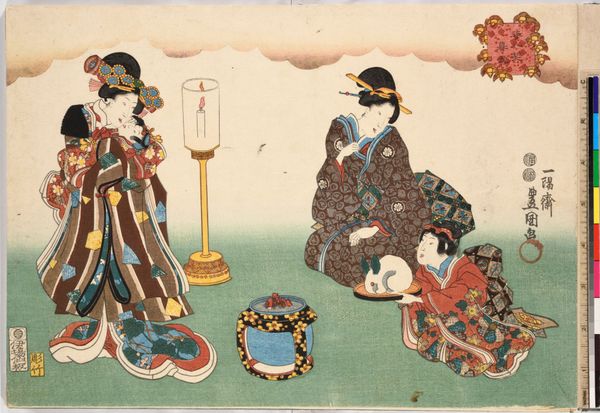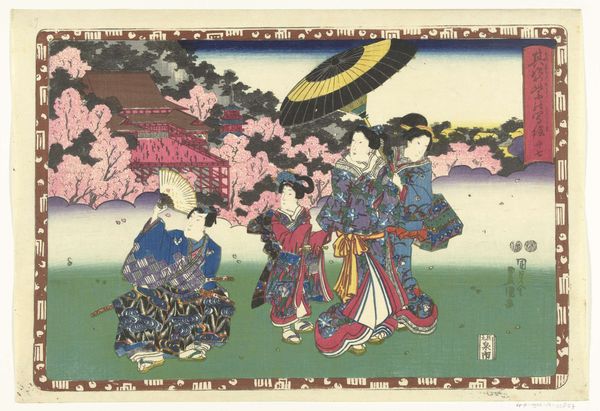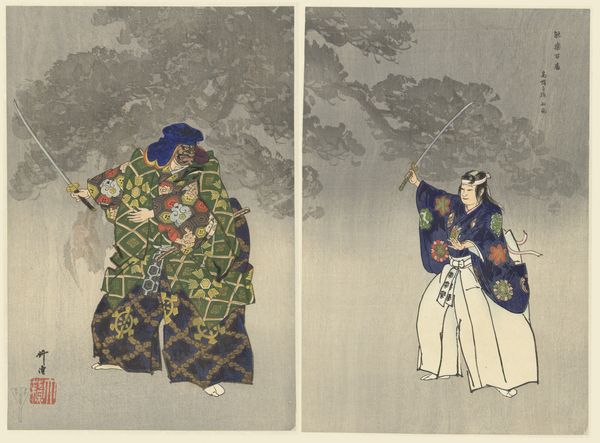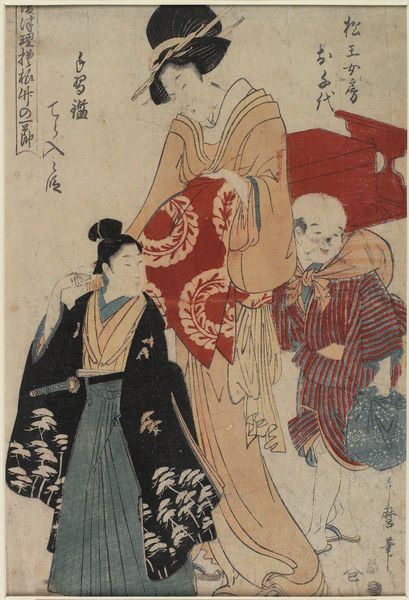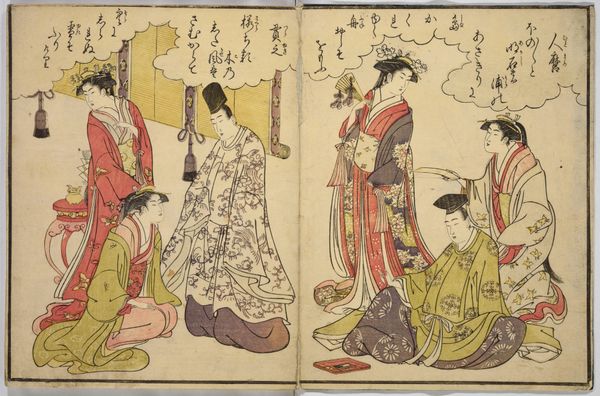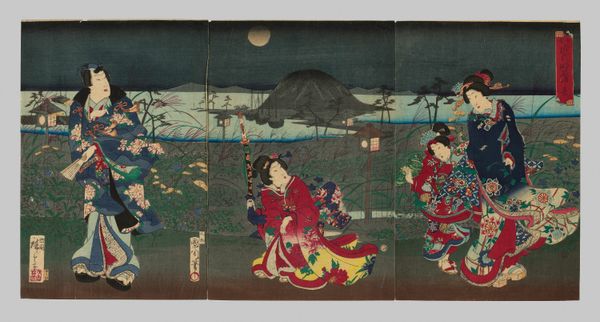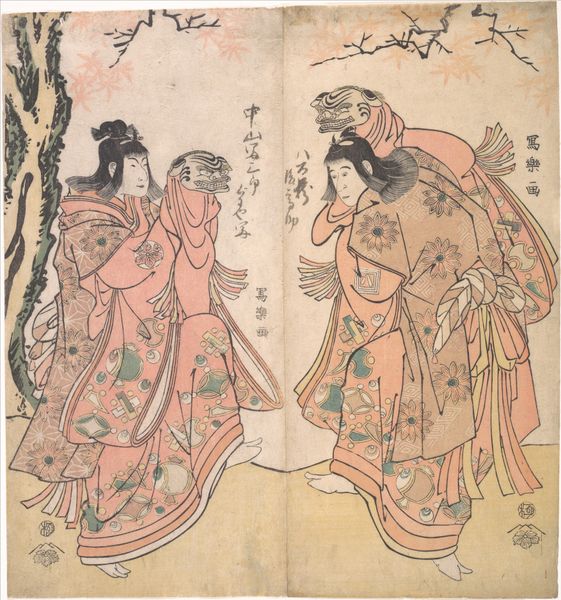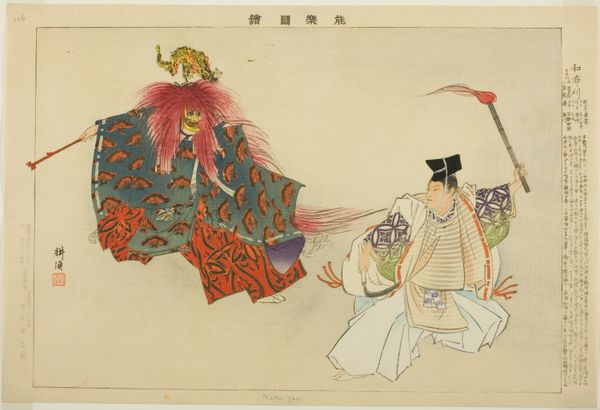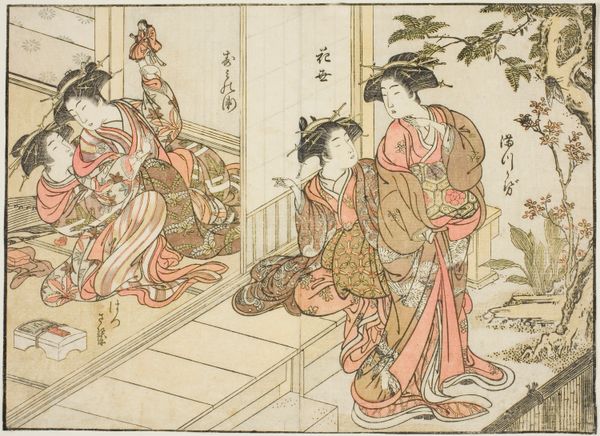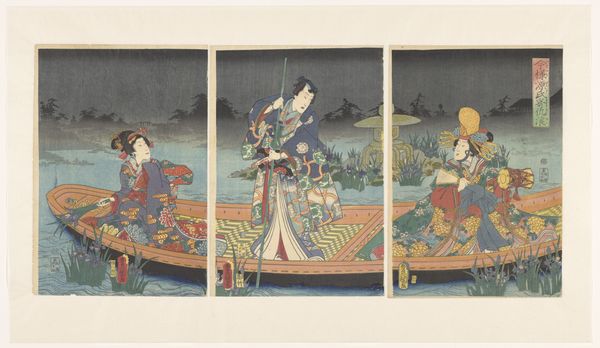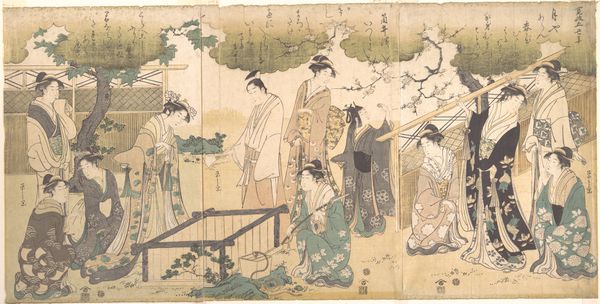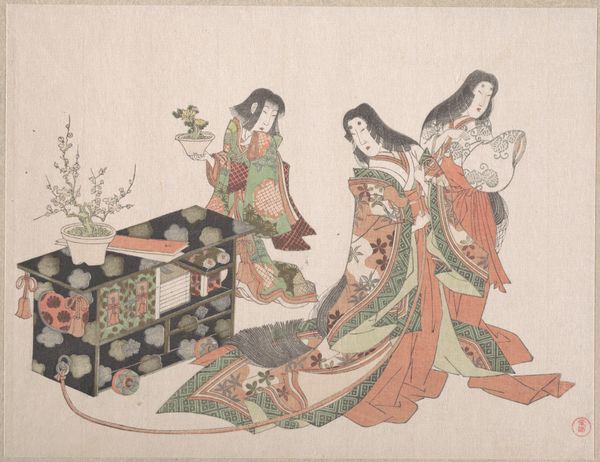
Scene from a Ghost Story: The Okazaki Cat Demon 1840 - 1860
0:00
0:00
print, woodblock-print
#
portrait
#
narrative-art
# print
#
asian-art
#
ukiyo-e
#
figuration
#
woodblock-print
Dimensions: A: H. 14 3/8 in. (36.5 cm); W. 10 in. (25.4 cm) B: H. 14 3/8 in. (36.5 cm); W. 10 in. (25.4 cm)
Copyright: Public Domain
Curator: Utagawa Kuniyoshi's woodblock print, “Scene from a Ghost Story: The Okazaki Cat Demon," created between 1840 and 1860, is a striking example of ukiyo-e. What’s your initial take? Editor: Immediately, I'm drawn to the sheer texture achieved through the woodblock technique. Look at the layered patterns of the robes, the granular effect in the ghost cat, and the contrast in the figures' apparel which must involve precise carving and layering. Curator: Indeed. Kuniyoshi's prints often reflect a deep understanding of social narratives. Consider the ghostly cat looming behind—it reflects anxieties about marginalized figures and hidden power, playing on societal fears projected onto "othered" identities. Editor: Absolutely, the layering of the image underscores a tangible creation. The means of production allowed for complex imagery to come alive. These were mass produced and consumed which would certainly drive cultural anxiety too. Curator: And the central figure with the scroll? He appears to be a scholar confronting the supernatural, which touches on the role of knowledge and literacy in challenging dominant power structures, wouldn't you say? It presents a conflict between traditional and other modes of thinking. Editor: Yes, look how the production of the print itself democratized these narratives. What was previously high art now accessible to a wider audience? This distribution undoubtedly influenced social attitudes towards belief and superstition in this moment. Curator: Exactly! These narratives circulated and reinforced or challenged those societal roles through representation. What lingers most with you when considering these combined contextual details alongside Kuniyoshi's masterful method? Editor: For me, it's that despite the print's intended "horror," it represents the very real material act of shaping cultural perceptions. The commodification and subsequent accessibility meant more Japanese people than ever had tangible contact with social and artistic discourse.
Comments
No comments
Be the first to comment and join the conversation on the ultimate creative platform.
